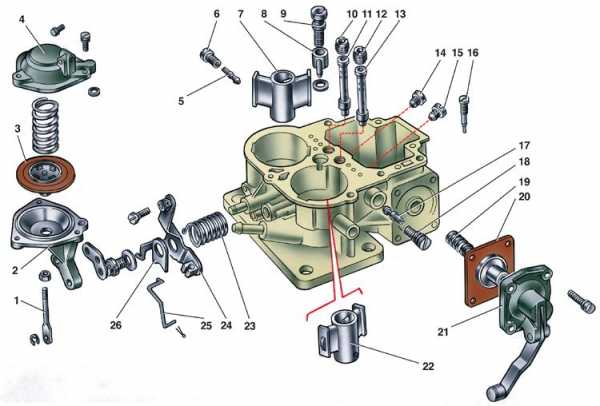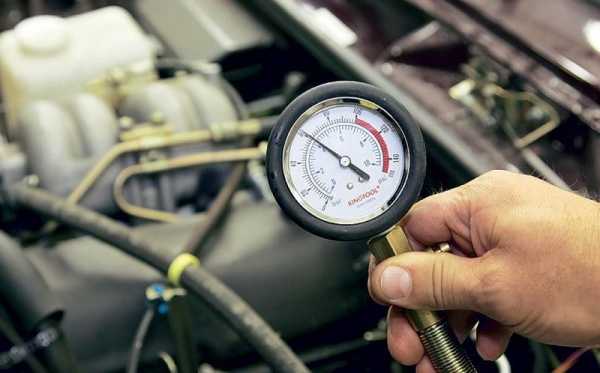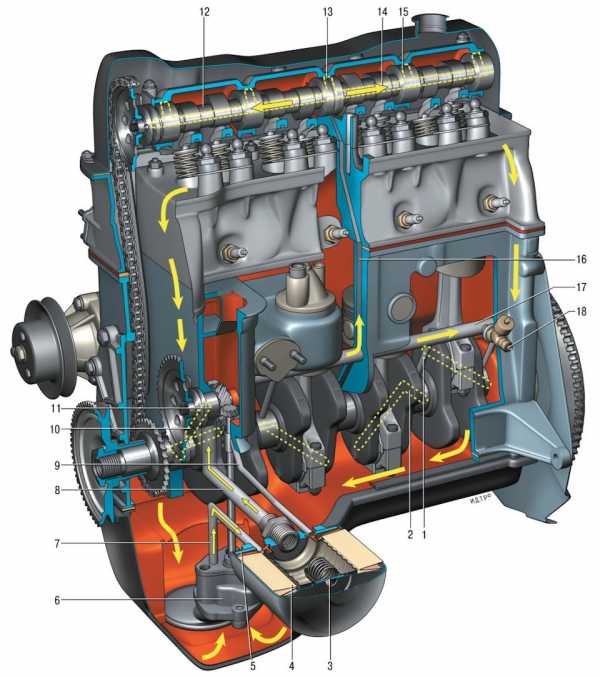Toyota xse camry 2018
2018 Toyota Camry XSE V-6
View 63 Photos
December 2017 By ALEXANDER STOKLOSA Multiple Photographers
Shop Local Cars View 63 Photos
Toss out “Toyota Camry” during a word-association game, and most automotive enthusiasts would respond with some allegory for anonymity, appliance, or a similarly unflattering description for automotive wallpaper. The latest Camry, with its all-new platform, fresh powertrains, and expressive styling, attempts to shake off that image. The range-topping Camry XSE V-6 is the most effective implementation of that retooling, blending the lineup’s most powerful engine with the sportiest trim level.
This XSE is part of the sporty S pillar of the Camry family, which also includes the lower-spec SE; Toyota has an entirely different L vertical with L, LE, and XLE Camrys that wear toned-down front and rear bumpers and ride on more comfort-oriented suspension setups in order to attract traditional Camry buyers.
Even those softer-edged L models are notably more satisfying to drive than past Camrys. But the S trims build on that solid foundation with firmer damping, bigger wheels with wider tires, and distinctive front and rear bumpers with gaping intakes and lots of blacked-out trim. That you can order the XSE with a contrasting black-colored roof (a $500 option) and a blood-red interior speaks volumes about Toyota’s lowered inhibitions.
The XSE—as well as its L counterpart, the XLE—unlocks the option of grabbing the Camry’s new 301-hp 3.5-liter V-6 engine. With port and direct fuel injection, the six is 33-hp stronger than last year’s port-injected 3.5-liter V-6. Torque is up 19 lb-ft to 267, peaking at the same 4700 rpm as before. Other 2018 Camrys are propelled by a 2.5-liter inline-four or a gas/electric hybrid powertrain.
The V-6 Camry is intriguing not only for its substantial horsepower, but also for having six cylinders. Nearly every competitor has turned to smaller, turbocharged four-cylinders for their uplevel engine options, including the Camry’s nemesis, the Honda Accord. This V-6 is a stonker, though, sending the Camry from zero to 60 mph in 5.8 seconds—2.1 seconds quicker than a four-cylinder Camry SE we tested. And it spits an edgy snort out of the XSE’s quad exhaust outlets, one that’s more distinguished than four-cylinder competitors’ vacuum/blender soundtracks. Still, the 252-hp turbocharged inline-four in Honda’s top-dog Accord 2.0T scoots that model to 60 mph 0.3 second quicker. Although the two sedans have nearly equal peak torque, the 2.0T Accord has barely any torque steer whereas the Toyota has plenty.
Honda also has Toyota beat in the transmission race, where the Accord 2.0T boasts a quick-witted automatic with 10 forward speeds to the Camry’s eight. The Accord also offers a manual transmission with both of its engine options. A stick shift would be a much welcome alternative for the Camry, as decisions come slowly to the eight-speed automatic. There is a slight delay between the driver stomping the gas pedal and the receipt of a downshift, a sin aggravated by the transmission’s stubborn preference for its higher gears. A Sport button on the center console adds some eagerness to the engine’s responses, and an S slot for the gear lever does the same for the transmission, but neither fully erases the powertrain’s slight hesitation in reaction to aggressive throttle applications. Reaction to manual gear selections from both the steering-wheel-mounted paddles and the shift lever’s plus/minus gate are similarly unexceptional.
If the engine and transmission could use a little extra seasoning to match the XSE’s sporty image, the chassis is pretty much spot-on. This Camry turns with an enthusiasm that nearly matches the benchmark Honda Accord and Mazda 6, with no appreciable impact on overall comfort. While the Accord 2.0T rides on fancier adaptive dampers with two driver-selectable firmness levels, the Camry XSE uses traditional fixed-rate dampers that cover nearly the same spectrum of control and ride quality. Body roll in the XSE is kept well in check, and this test car circled our skidpad with 0.87 g of grip—right on the heels of the Accord 2.0T’s 0.88 g.
Opting for the V-6 adds about 200 pounds to the Camry’s curb weight (according to Toyota), most of that concentrated in the nose, shifting the weight distribution slightly forward. The mass’s effects on handling are detectable only by our instruments and by those who’ve driven a four-cylinder Camry and paid extra-close attention to its turn-in characteristics. The 2018 SE bettered this XSE’s skidpad grip by 0.01 g and nudged into corners with a bit more fluidity. The weight will be more noticeable at the pump. We averaged 24 mpg during our test, compared with 32 mpg in the four-cylinder SE and 40 mpg in the 2018 Camry hybrid. Honda’s Accord 2.0T averaged the same 24 mpg as this XSE but ran away from the Toyota on our 75-mph highway fuel-economy loop, scoring a stellar 35 mpg to the Camry’s 29. The four-cylinder Camry has both sedans beat on the open road, notching an astounding 45 mpg on our highway test (1 mpg greater than the Camry hybrid!).
The rest of the XSE experience is similar to that in other Camrys—although with the glaring exception of its vastly superior interior quality. Stepping down even one level to the SE—or, if coming from an XLE, an LE—is a descent into interiors filled with more hard plastics and uneven panel gaps than you’ll find in top-rung Camrys. It may be that Toyota is using this as a way to entice buyers up the price ladder, given that active-safety features such as lane-keeping assist, adaptive cruise control, and automated emergency braking are now standard across the lineup. At least the infotainment system shared with lesser Camrys is just as easy to use here, thanks in part to the attractive chrome-tipped hard-button shortcuts to key menus that flank the screen, as well as the volume and tuning knobs located close to the steering wheel.
So where does this leave the Camry’s renaissance? Blending the sedan’s most dramatic styling changes with its strongest engine and its nicest innards punts the Camry XSE V-6 near the head of a class led by the Accord 2.0T. The privilege is expensive, though. The four-cylinder XSE starts at $29,895 and includes LED headlights and taillights, quad exhaust outlets, inductive phone charging, a panoramic sunroof, a 10-inch color head-up display, dual-zone automatic climate control, and leather seat covers, features that are either optional or unavailable on the SE. The V-6 is another $5950, and our test car added the $940 enhanced navigation system, $1050 360-degree parking camera and sensors, and a few dealer-installed options, bringing the total to $38,059. So make a mental note for future word-association games: Now “Camry” can be interchangeable with dynamic, stylish, and (at least occasionally) pricey.
Shop Local Cars Overview Photos Build and Price Shop Local Cars View All Features and SpecsVEHICLE TYPE: front-engine, front-wheel-drive, 5-passenger, 4-door sedan
PRICE AS TESTED: $38,059 (base price: $35,845)
ENGINE TYPE: DOHC 24-valve Atkinson-capable V-6, aluminum block and heads, port and direct fuel injection
Displacement: 210 cu in, 3456 ccPower: 301 hp @ 6600 rpmTorque: 267 lb-ft @ 4700 rpm
TRANSMISSION: 8-speed automatic with manual shifting mode
DIMENSIONS:Wheelbase: 111.2 inLength: 192.7 inWidth: 72.4 in Height: 56.9 inPassenger volume: 100 cu ftTrunk volume: 15 cu ftCurb weight: 3665 lb
C/D TEST RESULTS: Zero to 60 mph: 5.8 sec Zero to 100 mph: 14.4 sec Zero to 130 mph: 26.3 sec Rolling start, 5-60 mph: 6.2 sec Top gear, 30-50 mph: 3.4 sec Top gear, 50-70 mph: 4.6 sec Standing ¼-mile: 14.4 sec @ 100 mph Top speed (governor limited): 136 mph Braking, 70-0 mph: 167 ft Roadholding, 300-ft-dia skidpad: 0.87 g
C/D FUEL ECONOMY: Observed: 24 mpg 75-mph highway driving: 29 mpg Highway range: 460 miles
EPA FUEL ECONOMY: Combined/city/highway: 26/22/32 mpg
- Download Test Sheet
- Download Test Sheet
- Download Test Sheet
2018 Toyota Camry XSE Review: Getting Better All The Time
– Cleveland, OH
Verdict 6.4 / 10
I’ve never understood the Toyota Camry’s popularity. It’s not the best midsize sedan in most categories, and yet it has wildly outsold all others for years. The latest Camry, completely redesigned for 2018, seems to be more of the same: more expressive styling, more power, more space, more safety, and more efficiency. Going by past experience, it’s safe to bet it will get more sales, too.
While its new styling isn’t for everyone, including myself, the Camry offers enough to appreciate that I can see why tens of thousands of people continue to buy one each month. Truly, the only damning complaint left is that it still doesn’t offer Apple CarPlay and Android Auto compatibility, though Toyota intends to fix that next year.
Pricing ⠀ ⠀ ⠀ ⠀ ⠀ ⠀ ⠀ ⠀ ⠀ ⠀ 6/10
The new Camry has a starting price of $23,495, which isn’t the lowest in the segment, but you get what pay for; the base Camry LE comes equipped with standard tech, infotainment, and safety features that most base-model competitors don’t.
The Camry XSE I tested, meanwhile, costs $35,333 and comes with Toyota’s new 2.5-liter four-cylinder engine. You can spend even more, however, by choosing the optional 3.5-liter V6 engine. Still, regardless of engine, the XSE is the Camry’s new top trim level, and it’s common these days for fully loaded midsizesize sedans to reach over thirty-five grand in price.
Design & Exterior ⠀ ⠀ ⠀ ⠀ ⠀ ⠀ ⠀ ⠀ ⠀ ⠀ 6/10
Toyota hasn’t played it safe with the Camry’s design in recent years. The last few generations have been penned with an aggressively styled look that never seemed to match its four-door family car mission. And yet, people have continued to buy them in droves. This new design is the wildest one yet, especially in this sporty-looking XSE trim. Toyota does give you options, though; other trims have tamer front and rear fascias.
Beauty is in the eye of the beholder, and while my eyes don’t behold a lot beauty in the Camry, I do appreciate the functionality contained within its shape. The roofline, for instance, doesn’t slope into the rear window until after the passenger compartment, which provides for class-reading rear seat headroom. Also, designers have pulled down the bottom of the side windows, which combats claustrophobia and aids visibility.
Interior & Comfort ⠀ ⠀ ⠀ ⠀ ⠀ ⠀ ⠀ ⠀ ⠀ ⠀ 7/10
The new Camry’s interior is well designed and constructed with materials appropriate for its price point. That is to say, it’s no luxury car, but neither does it feel cheap inside. There’s decent leather on the seats, nicely finished plastics, and some glossy surfaces to mix things up.
Again, though, look past the shape of things to find what makes the interior special: space! The Camry is a very roomy sedan – among the best in the segment and behind only the new Honda Accord. Rear-seat passengers, in particular, have a surprising amount of space to stretch out their limbs. Note, though, that Toyota achieved this feat, despite shrinking the car’s height, by lowering the seats themselves some inches. That means the Camry may be harder to get in and out of for some people.
Technology & Connectivity ⠀ ⠀ ⠀ ⠀ ⠀ ⠀ ⠀ ⠀ ⠀ ⠀ 5/10
While Toyota has updated its Entune infotainment system with better graphics and snappier performance, it still looks and operates like a system that’s a few years older than state of the art. Also, Toyota is still not offering Apple CarPlay and Android Auto on the Camry either, though we’re told it will be on 2019 models.
Ironically, the Camry does offer wireless charging for your smartphone, which is accomplished via a well-placed charging pad ahead of the shifter. Other bits of tech to appreciate inside the Camry include the large, high-res head-up display, and a fair number of USB ports for charging devices.
Performance & Handling ⠀ ⠀ ⠀ ⠀ ⠀ ⠀ ⠀ ⠀ ⠀ ⠀ 5/10
Toyota gets kudos for offering a pair of very powerful engines. One is a 3.5-liter V6 offering a muscle car-like 301 horsepower, while my Camry XSE tester sports the new 2.5-liter four-cylinder engine producing 208 horsepower and 186 pound-feet of torque. In other trim levels, it still makes 203 hp, and that’s more power than base engines in the Honda Accord, Nissan Altima, and Chevy Malibu, and its fuel efficiency is among the highest in the group, as well.
That said, the 2.5-liter is naturally aspirated, and without the aid of a turbocharger, achieving peak power requires lots of revs. The eight-speed automatic transmission, meanwhile, is tuned for efficiency and upshifts as quickly as possible. Thus, the engine’s full power isn’t normally felt unless you snick the shifter over into Sport mode, which remaps the shift points to hold gears longer.
As for handling, the Camry benefits from an all-new platform that’s significantly stronger than before, as well as a new rear suspension, both of which contribute to a higher level of overall handling. Other things, like the steering and braking, feel more capable than in Camry’s past, too. Better than before, however, doesn’t mean best; the Camry’s handling still falls short of segment leaders like the Mazda6 and Honda Accord.
Safety Features ⠀ ⠀ ⠀ ⠀ ⠀ ⠀ ⠀ ⠀ ⠀ ⠀ 10/10
Toyota takes safety seriously because it knows that buyers do too. Every Camry sold, regardless of price and trim level, comes with the Toyota Safety Sense suite of advanced safety features. This includes automatic emergency braking, full-speed radar-based cruise control, a lane departure warning system with lane-keep assist, and automatic high beams. This XSE model also comes standard with a blind spot and rear cross traffic alert system, as well as front and rear parking aid sensors. And finally, an optional 360-degree camera system is also included.
More and more automakers are following Toyota’s lead by including advanced safety features as standard equipment on all their cars. Ford recently announced that its CoPilot360 safety suite will soon come standard on all models, and Nissan has promised the new 2019 Altima midsize sedan will come standard with automatic emergency braking, forward collision warning, and Intelligent Driver Alertness. Still, Toyota deserves credit for starting this trend that greatly increases the safety of drivers, passengers, and pedestrians alike.
Running Costs & Fuel Economy ⠀ ⠀ ⠀ ⠀ ⠀ ⠀ ⠀ ⠀ ⠀ ⠀ 8/10
As mentioned, despite the Camry’s new 2.5-liter four-cylinder engine being the most powerful base engine you can buy in a midsizesize family sedan, it’s also one of the most fuel efficient. It scores official ratings of 28 miles per gallon in the city, 39 on the highway, and 32 combined. While the new Accord has a slightly higher combined rating of 33 mpg, the Camry bests it on the highway by one mpg. The Camry also has a big 16-gallon fuel tank, which means over 500 miles can go by between fill ups.
If fuel efficiency is your top priority, Toyota also offers the Camry Hybrid, which can achieve up to an incredible 52 mpg combined. What’s more, Toyota offers the hybrid version in several trim levels, not just expensive ones that come loaded with features you may not want. Even the base Camry LE is offered as a hybrid.
Photos: John Neff / Motor1.com
2018 Toyota Camry XSE V6 Drivers' Notes Review | More than a tool
Toyota's king is back near the top of the pile
7.5
The best Camry in years. The excellent V6 is matched by solid handling for the class. The hybrid is a winner, too, if you value economy over power. A handsome interior is let down by a disappointing infotainment system. Scores high on safety tests.
-
Engine
3.5L V6
-
Power
301 HP / 267 LB-FT
-
Transmission
8-Speed Automatic
-
Drivetrain
Front-Wheel Drive
-
Engine Placement
Front
-
Curb Weight
3,579
-
Seating
2+3
-
MPG
22 City / 32 Highway
-
Base Price
$35,295
-
As Tested Price
$39,253
-
Best Deal Price
$26,579
Our test car is the top-tier XSE trim, the sporty sister model to the Camry XLE we drove last year. The XSE trades some luxury features for a bit of flavor, giving the Camry far more life than it's had in years. The sharp front fascia, the two-tone paint and bright red interior all give this car a bit of extra jazz. Add in the 301 horsepower 3.5-liter V6 and you get a surprisingly quick and enjoyable five-seat family hauler.
Editor-in-Chief Greg Migliore: The 2018 Toyota Camry and the 2018 Honda Accord are neck-and-neck for best in segment. Both are excellent. I enjoyed my night in the Camry for several reasons, but the power, design and interior caught my attention the most. It's an impressive car that excels in all areas.
Toyota is aggressively taking risks with the Camry's styling. It's clearly a sedan that's meant to stand out. I like the looks of the Accord a little more — it's subtler while the Camry comes out a bit more severe — but they're sharp in their own ways. This Camry is done up with 19-inch black wheels and smoked LED lights, which add to the attitude.
I like the red and black interior in the Camry XSE we tested. It's laid out smartly, the infotainment is solid and the view is surprisingly good for a big car. I felt confident dashing in and out of lanes during busy morning traffic. Speaking of that, the V6 is excellent. With 301 horsepower you've got everything you need to take off from lights briskly. The eight-speed automatic transmission is smooth. I even started tapping through downshifts with the paddles for fun. It's a well-calibrated powertrain. The basics measure up well, too. The trunk is big. The seats are comfortable. It's fun to punch through the driving modes. You'll notice the Sport setting. Eco does feel slower (and more efficient). Normal feels pretty normal.I'd recommend the Camry. Benchmark it against an Accord and see which one you like the most and you won't be wrong. Mazda, Chevy and Ford all have strong entries in this segment, but I'd pick the Honda or the Toyota ahead of them.
Senior Editor, Green, John Beltz Snyder: The Toyota Camry isn't the sexiest or most exciting car, but that's not really what this segment is about. Still, I found this model to be quite fetching, especially in white with black accents. The inside of the car is also sleek and attractive. Our tester had a red interior, which really makes the leather stand out and draw your attention away from the black plastic on top of the dash.
It's also comfortable to drive. It's quiet, and its suspension soaks up bumps in the road. It also has a decent amount of scoot. When I took it out of Eco mode and put it into Sport, I found the Camry eager to chase traffic down the highway. I made good use of adaptive cruise control in my morning commute, though.The tech here is a mixed bag. I love having a nice, clear head-up display with lots of useful information on it. I had trouble connecting to the infotainment system via Bluetooth, but once I did get it set up, it did the things I needed — stream podcasts and take phone calls — just fine. I had a little bit of trouble fumbling through the menus, but I could probably get used to it given more time behind the wheel. At least I didn't encounter some of the glitches we noticed the last time we had a Camry in the office.
Managing Editor Greg Rasa: I spent a week in a different XSE V6 than my colleagues, this one in vivid Ruby Flare Pearl, then spent a second week in a silver Hybrid XLE. (Both are shown in the gallery above.)
We've been telling you for a while now that the 2018 redesign is not your grandpa's Camry. The V6 drivetrain is smooth and responsive. The interior is stylish. The exterior is downright good-looking from several angles. Just maybe not up front. It was interesting to benchmark the well-equipped, $38,230 XLE V6 against the similarly equipped $37,245 Hybrid XLE. The Hybrid's total output is 208 horsepower against the V6's 301 hp, with a max of 163 pound-feet of torque against the V6's 267 lb-ft. And the Hybrid gets a CVT instead of the eight-speed. So sure, it's slower and less eager than the V6. But for a family car, it's not glacial (0-to-60 in 7.4 seconds vs. the V6's 5.8), and if you weren't jumping straight into it from the V6, you wouldn't be too disappointed. The V6's tachometer is replaced by the Hybrid's charge vs. discharge meter and other mileage readouts to aid your frugal driving habits. Both cars have a clear, sharp head-up display, with the Hybrid's able to convey some of the energy-management info.The exteriors have slightly different gills and spoilers. And the grilles are different. Can't say I liked one over the other. Both have roomy trunks. (The hybrid battery — in this trim it's nickel hydride — is under the rear seat.) The cars also carry an array of driver-assist features, though lane-keeping seemed to work better over the same stretches of highway in the Hybrid tester than in the V6, which sometimes couldn't detect the center line.
Both have several driving modes, with the Hybrid adding an EV setting that holds the powertrain in pure electric below about 17 mph, when the ICE invariably kicks in. However, if you stay out of EV mode, feather the accelerator and drive strategically, it's easy to run electric-only at speeds well past 40 mph.
But driving style for the week was nowhere close to frugal, and the Hybrid returned an indicated mileage of 37.1 mpg, far less than its EPA ratings of 44 city, 47 highway, 46 combined. (The Hybrid in LE trim has a lithium-ion battery and is the mileage champ of the Camry lineup, with EPA ratings of 51 mpg city, 53 highway, 52 combined.) But I blame myself, not the car, and it's still far better than the 20.7 mpg racked up in the V6. Both models have their strengths, and both are easy to like.
Associate Editor Reese Counts: While I wasn't quite as smitten with the new Camry as I was with the new Accord, like Greg, I think it's so close that the difference comes down to details. The Accord is far better looking both inside and out, but the Camry is offered in a wider variety of colors and trims. The Accord's turbo-four offers plenty of off-the-line torque, but there's no beating the Camry's more powerful naturally-aspirated V6. It's one of the best around. Then again, you can get the Accord with a manual transmission.
I'm a sucker for red leather. pic.twitter.com/EQLTEl9HtE
— Reese Counts (@rmcounts) July 3, 2018 Inside, both cars feel about the same when it comes to fit and finish. Once again, I prefer clean styling in the Accord, but the Camry's interior looks good, too (especially in this color). The Camry's infotainment system is still subpar, but it seemed to work fine connecting to Bluetooth. At least both systems are back to using buttons. Again, it's a wash when it comes to ride, handling and comfort. They both tackle a corner with more grace than expected, though don't expect German sport-sedan levels of performance. On straight roads, both the Camry and Accord relax into nice, comfortable and quiet cruisers. Like Greg said, drive both and see which one fits. Too many good options is far from a bad thing.Related Video:
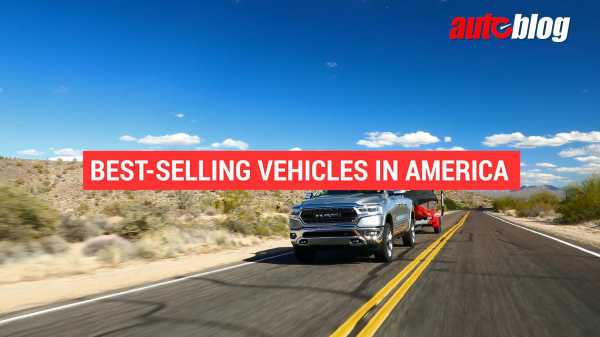
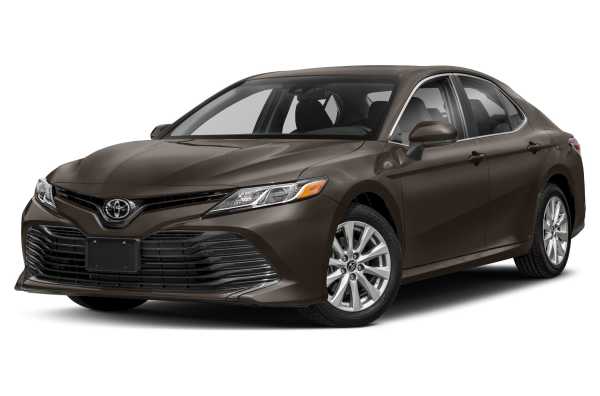
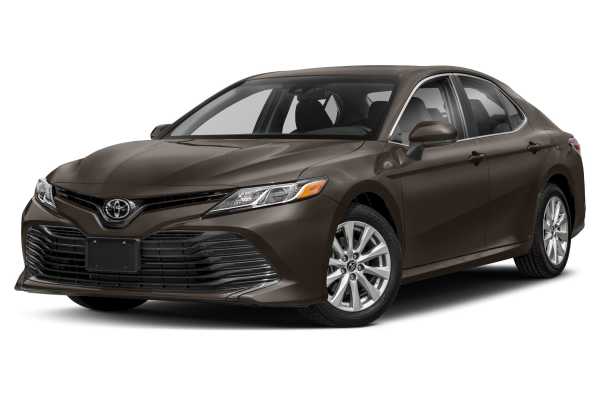 MSRP: $24,150
MSRP: $24,150  MSRP: $27,470
MSRP: $27,470 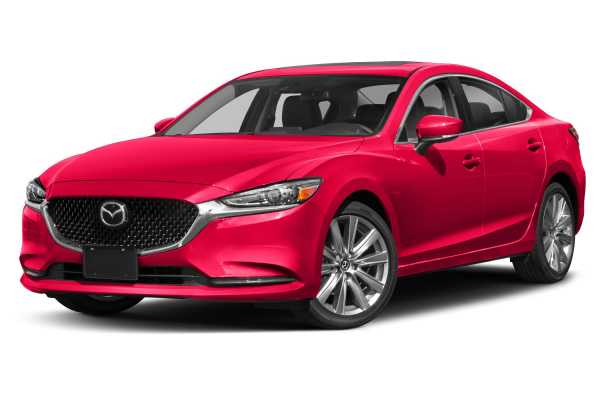 MSRP: $25,700
MSRP: $25,700 Autoblog accepts vehicle loans from auto manufacturers with a tank of gas and sometimes insurance for the purpose of evaluation and editorial content. Like most of the auto news industry, we also sometimes accept travel, lodging and event access for vehicle drive and news coverage opportunities. Our opinions and criticism remain our own — we do not accept sponsored editorial.
2019 Honda Pilot Drivers' Notes 13 cars you can legally import in 2019 2020 BMW 4 Series convertible spy shots Autoblog's top photographs of 2018 Watch Tesla Model 3 get built First 2019 Hyundai Nexo FCEV delivered 1 2Follow Us
From Our Partners
Huge Savings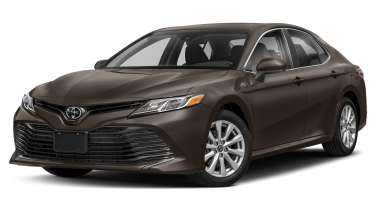
$23,645 - $35,100 MSRP / Window Sticker Price
$2,417 - $3,188 Nat'l avg. savings off MSRP
!function(f, b, e, v, n, t, s) { if (f.fbq) return; n = f.fbq = function() {n.callMethod ? n.callMethod.apply(n, arguments) : n.queue.push(arguments)}; if (!f._fbq) f._fbq = n; n.push = n; n.loaded = !0; n.version = '2.0'; n.queue = []; t = b.createElement(e); t.async = !0; t.src = v; s = b.getElementsByTagName(e)[0]; s.parentNode.insertBefore(t, s)}(window, document, 'script', '//connect.facebook.net/en_US/fbevents.js'); fbq('init', '174181139752304'); fbq('track', 'PageView'); fbq('trackCustom', 'ViewedVehicle', {year: '2018', make: 'Toyota', model: 'Camry', trim: ''});>
(function(i,s,o,g,r,a,m){i['GoogleAnalyticsObject']=r;i[r]=i[r]||function(){(i[r].q=i[r].q||[]).push(arguments)},i[r].l=1*new Date();a=s.createElement(o), m=s.getElementsByTagName(o)[0];a.async=1;a.src=g;m.parentNode.insertBefore(a,m)})(window,document,'script','//www.google-analytics.com/analytics.js','ga'); ga('create', 'UA-71479133-1', 'auto'); ga('set', 'anonymizeIp', true); ga('set', 'dimension1', '2018'); ga('set', 'dimension2', 'Toyota'); ga('set', 'dimension3', 'Camry'); ga('set', 'dimension4', '2018 Toyota Camry XSE V6 Drivers' Notes Review | More than a tool'); ga('set', 'dimension5', 'Design/Style|Toyota|Quick_Spins|Sedan|2018_toyota_camry|2018_toyota_camry_xse|autoblog_score|toyota_camry|toyota_camry_xse'); ga('set', 'dimension7', 'content'); ga('set', 'dimension8', 'story'); ga('send', 'pageview');>
(function(d, t) {var a = d.createElement(t), s = d.getElementsByTagName(t)[0]; a.src = 'https://o.aolcdn.com/ads/adsWrapper.js'; s.parentNode.insertBefore(a, s);}(document, 'script'));>
(function(d, t) {var a = d.createElement(t), s = d.getElementsByTagName(t)[0]; a.src = 'https://cdn.flipboard.com/web/buttons/js/flbuttons.min.js'; s.parentNode.insertBefore(a, s);}(document, 'script'));>
$.getScript('https://www.zergnet.com/zerg.js?id=21232');$.getScript('https://www.zergnet.com/zerg.js?id=47172');>
$.ajaxSetup({ cache: true });$.getScript('https://cdn.mediavoice.com/nativeads/script/aolibrands/autoblog_article.js');$.ajaxSetup({ cache: false });>
2018 Toyota CAMRY – First Drives of LE, XLE and XSE – By Zeid Nasser
[Parts of this post originally appeared on TheIntelligentDriver.com]
Toyota knows how valuable the Camry is.
It’s known as one of the most reliable, efficient and safe vehicles on today’s roadways.
But times are changing, and many of today’s vehicles ace those hallmark Camry qualities.
Toyota wants to keep their customers happy and maintain their sales lead with emotional design, leading tech and an engaging (gasp) driving experience.
Did they accomplish it?
Well, first some background info.
Back in 2006 when I earned my license, I convinced my mother that the newest generation 2007 Camry was the way to go. I was more thrilled with the packaging efficiency, engine efficiency and safety of this new Camry than how it handled, since it was after all, a Camry.
I quickly realized though that the joy of driving was missing and the visual excitement wasn’t there.
Toyota’s product planning team knew this.
Camry’s team was told by none other than their CEO, Akio Toyoda, that it’s time to shake things up. He wanted an engaging midsize car that was also beautiful to look at.
On the outside, we can definitely say they met that criteria. Sweeping lines, creases and multi-shaped sheet metal gives the Camry character and edginess. It’s beautiful and strong at the same time.
Designers wanted each Camry trim to be distinguishable from 200 yards away, not an easy feat but one we admit they accomplished thanks to unique characteristics in the front end, wheels, side and rear. Trims include L, LE, XLE, SE, XSE and hybrid powertrain versions of LE, SE, and XLE.
Camry LE, XLE and XSE Trim Comparisons
The XSE stands out the most with sporty intentions thanks to an aggressive face, stylish 19″wheels, and accents at the corners of the rear bumpers.
A two-tone color scheme with a black metallic roof is available and makes the Camry look sleeker and lower because of the blacked out greenhouse area. The two-tone treatment can be had with the Wind Chill Pearl, Blue Streak or Celestial Silver body colors.
LED headlights and taillights look sporty and modern, giving the Camry a unique look at night.
Open any of the doors and you’ll think you stepped inside a Lexus. Toyota has truly upped their game in the design and materials department. We started our drive in an LE trimmed Camry and were impressed with the dash layout, soft and padded touch points and attention to detail.
The two-tone dash color treatment with dimensional chrome trim brings an upscale feel to the cabin. The asymmetrical center dash flows down from the instrument cluster and is slightly angled toward the driver but still allows easy access for the passenger.
Volume and tuning knobs are stacked on top of one another on the left side of the Entune display, a huge help to drivers who don’t want to reach across the large screen. We like how the CD slot is cleanly integrated into the top of the dash.
Below the display is the available Qi charging mat for wire-free smartphone charging.
The new steering wheel moves all critical controls to the driver’s thumbs, including the radar cruise control (no more stalk poking out of the lower right).
Entune 3.0 is all new and works better than ever. The system is responsive and fluid, as good as the latest smartphone or tablet. Apple CarPlay and Android Auto are not available but we were able to quickly pair our phone and stream music in seconds.
Various grades of Entune exist depending on trim, with Premium Audio with JBL Clari-Fi and Dynamic Navigation being the top option.
The nav is “dynamic” in that it updates over the air, a first for Toyota. Complimentary trials of Destination Assist, Safety Connect, Service Connect, Remote Connect, and a Wi-Fi hotspot are all standard depending on trim.
A 10-inch head-up display is new and displays information in full color; it works very well.
Comfort during our day of driving was exceptional, with excellent support and various adjustments thanks to the 8-way power driver’s seat and available 8-way power passenger seat.
Cloth or leather seating are available depending on trim, with our favorites being Macadamia (tan) fabric and Cockpit Red leather on XSE. The red is absolutely gorgeous and completely changes the ambiance of the cabin.
A quick test of the rear seat shows just as much room but better comfort than previous Camry generations.
The trunk offers 15.1 cubic feet on ALL trim levels, including hybrid models because the battery pack has been packaged under the rear seat. A temporary spare remains in the trunk, a smart move.
The 2018 Camry represents the first entirely new vehicle on Toyota New Global Architecture (TNGA). This translates into a quieter, smoother, and better handling car. It also means better visibility, with an A-pillar design that makes it easier to see around turns.
On the road, the LE model felt secure ascending and descending winding roads, almost sporty. In the XLE hybrid, body motions felt flatter thanks to the heft of the battery pack in the back.
XSE V6 was an entirely different animal, with tight handling and incredible acceleration. It cornered better and felt tighter to the ground, with no head tossing and nothing but the feeling of confidence behind the wheel. Braking felt secure and strong on all trims.
Four-cylinder models generate 203 HP (XSE: 206) while the V6 produces 301 HP. Both are mated to a new 8-speed automatic.
Hybrid models generate a net of 208 HP. Power delivery from both gas engines is strong and smooth, with the hybrid being the strongest off the line and the V6 managing its incredible power output well.
EPA fuel economy ratings register in at 29 mpg city, 41 highway and 34 combined making the 2018 Camry L the most fuel efficiency midsize gas engine car on the market.
LE, SE, XLE and XSE four-cylinder models register in at 28 city, 39 highway, and 32 combined. V6 models earn 22 city, 33 highway, and 26 combined.
The hybrid LE trim produces Prius-like numbers of 51 mpg in the city, 53 on the highway and 52 combined thanks to a lithium-ion battery pack. SE and XLE trim levels make do with a 31-lb heavier nickel-metal hydride battery and earn 44 mpg city, 47 highway, and 46 combined.
Lastly and most importantly, the safety front. Toyota Safety Sense-P is standard and includes pre-collision protection with pedestrian detection, lane departure alert with steering assist, auto high beams and radar cruise control.
Blind-spot monitor with rear cross-traffic alert is available on LE and SE, and standard on higher trims with sonar sensors and automatic rear braking. Tire pressure monitoring now provides direct numerical readouts on SE trims and higher. Ten airbags are standard and we expect Camry to ace IIHS and NHTSA crash testing.
The 2018 Camry arrives at dealers late this summer, and we can’t wait to get behind the wheel again to push it into corners and take it down winding roads.
If you haven’t guessed it by now, yes, Toyota’s Camry team did a marvelous job on the newest generation of America’s best-selling midsize.
2018 Toyota Camry XSE [39 Photos]
2018 Toyota Camry XLE [41 Photos]
2018 Toyota Camry LE [28 Photos]
Photos By Zeid Nasser
"Питер - АТ"
ИНН 780703320484
ОГРНИП 313784720500453


